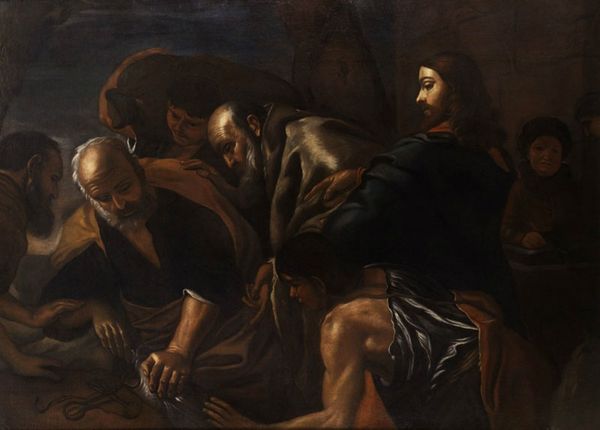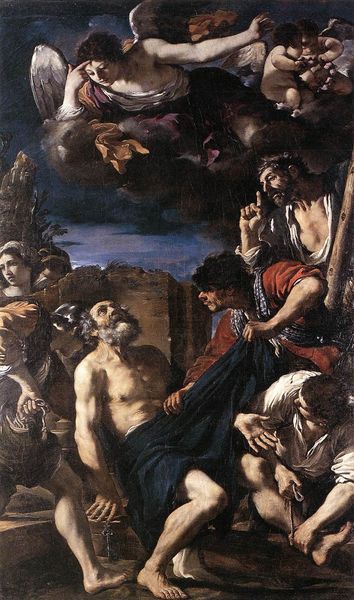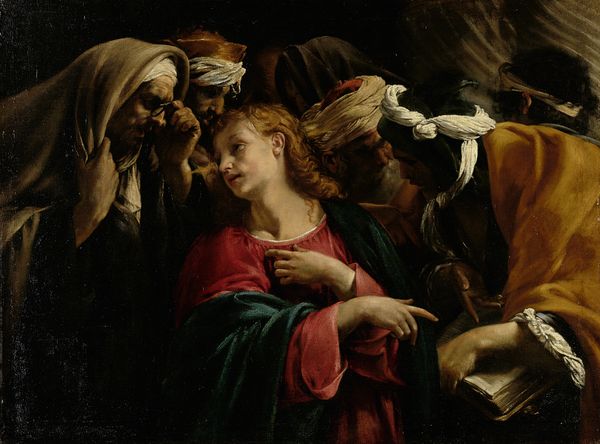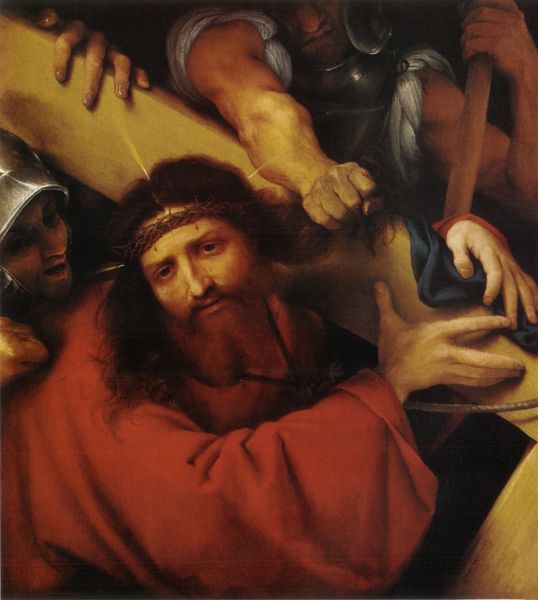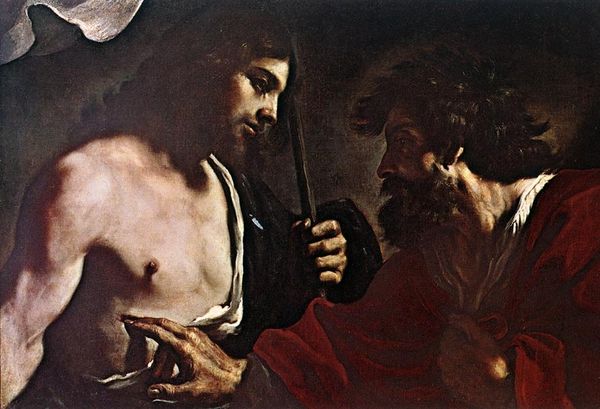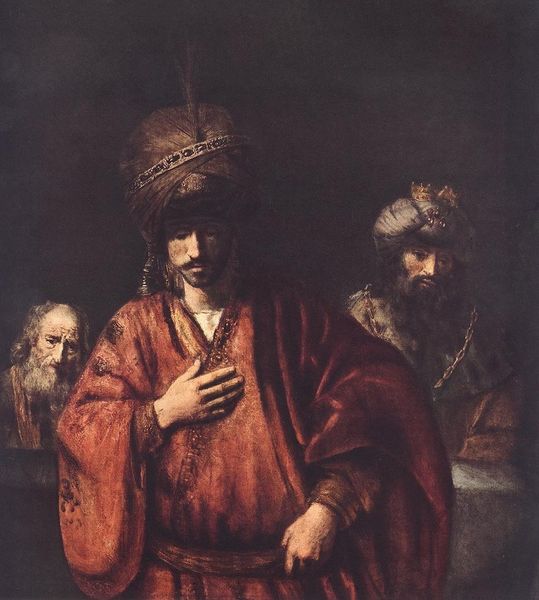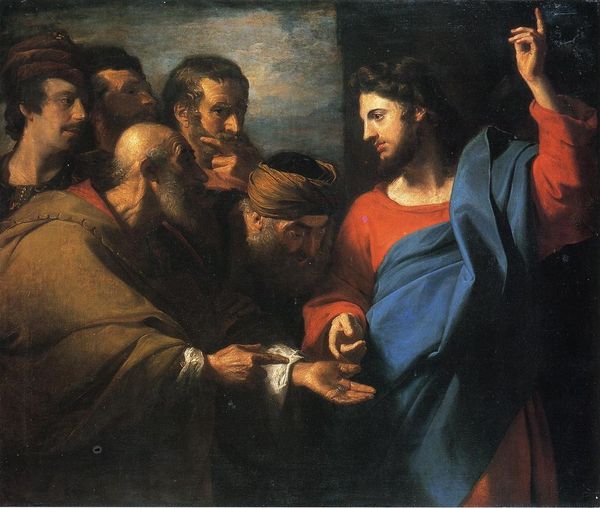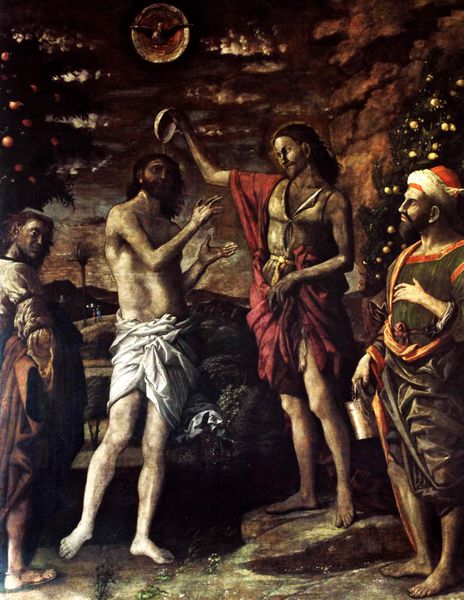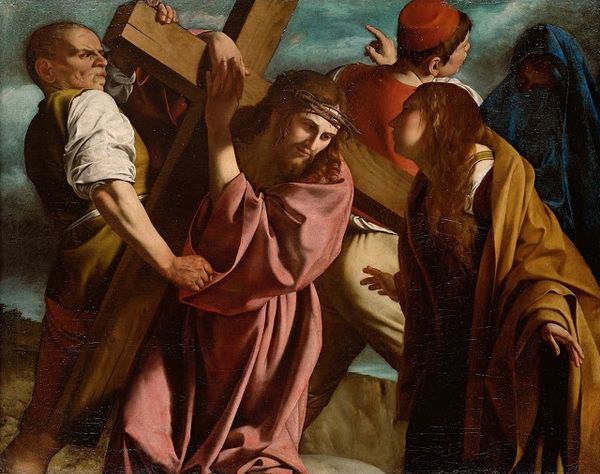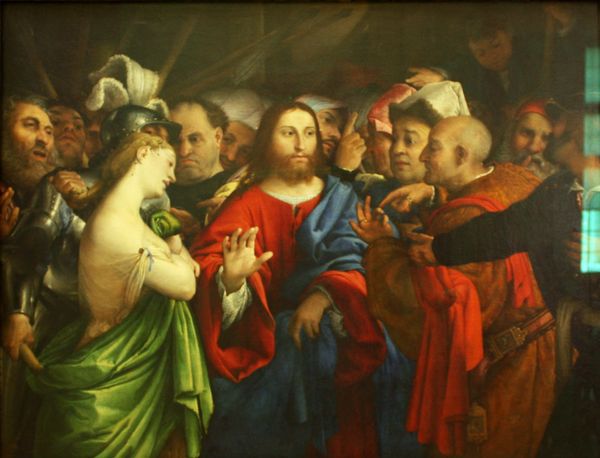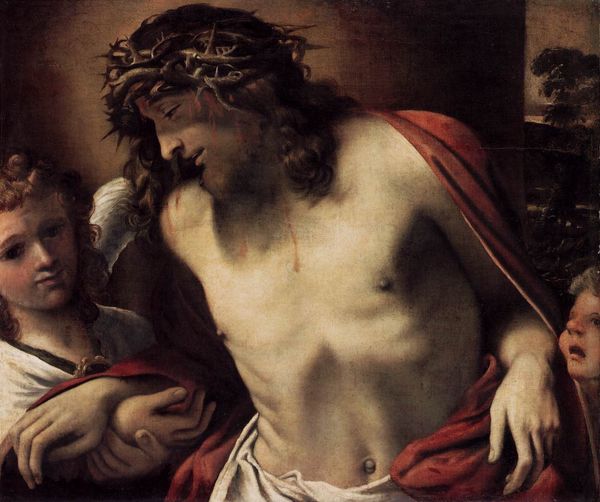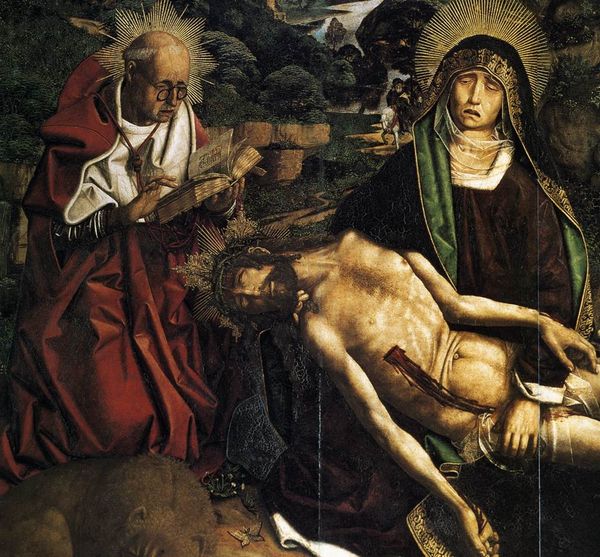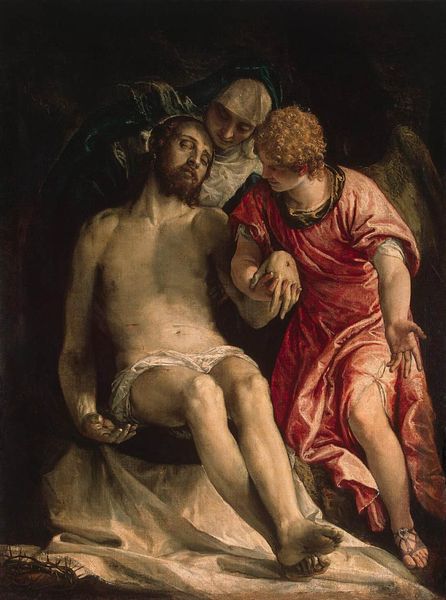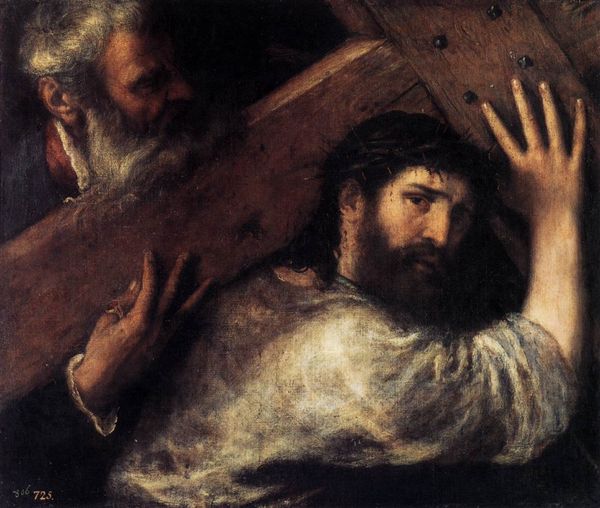
painting, oil-paint
#
portrait
#
painting
#
oil-paint
#
oil painting
#
soldier
#
christianity
#
history-painting
#
italian-renaissance
#
christ
Dimensions: 63 x 77.8 cm
Copyright: Public domain
Curator: This is Andrea Mantegna’s “Christ Carrying the Cross,” an oil painting from about 1505. Editor: Immediately, I’m struck by the raw intensity. It’s not idealized suffering; there’s a palpable weight in the grimaces and averted gazes. The darkness and light render the weight of Christ palpable. Curator: Absolutely. Mantegna, ever the master of visual rhetoric, uses the iconography of Christ's Passion to explore human nature, placing divine suffering against a backdrop of earthly cruelty. Editor: I agree. What is fascinating to me is his usage of oil paint which heightens the stark realism. Look at the detail in the executioner’s armour – then contrast this with the more loosely rendered robes of Christ and the men in the background. Is this meant to signify a difference between labor/military activity versus spiritual? Curator: The difference in texture could symbolize a divergence in spiritual understanding as you stated. I interpret the stern executioner to serve as a symbol of authority. See how the figures surrounding Christ either shrink away from him in his time of suffering or glower menacingly toward him. Editor: Right – and the labor implied in this. Creating armor is intense labor with an immediate military usage. Whereas a simple woolen robe implies no use value except for prayer. The materials create the mood. The texture indicates Mantegna's mastery of oil, but the context reveals layers of societal tensions, even commenting on the art world itself. Consider that religious art from this era frequently involved workshop collaboration. Curator: Your interpretation speaks volumes about the economic realities interwoven with faith. Mantegna, positioned at the nexus of faith and patronage, understood that religious art was not just devotional; it was commerce, it was propaganda. He makes the passion both personal and monumental. The cross Christ is bearing seems impossibly rough; it fills the space in an unbearable and deeply felt burden. Editor: Indeed. Thinking about Mantegna’s access to high quality materials helps in understanding this contrast between religious belief versus its mode of production. It enriches the entire viewing experience, doesn’t it? Curator: It does. Reflecting on the painting this way leaves one contemplating the very heavy intersections of power, suffering, belief, and materials.
Comments
No comments
Be the first to comment and join the conversation on the ultimate creative platform.
